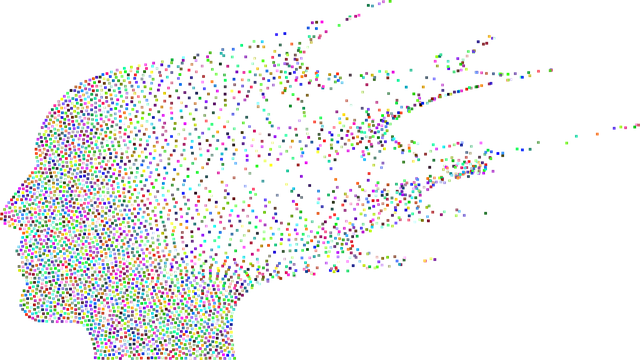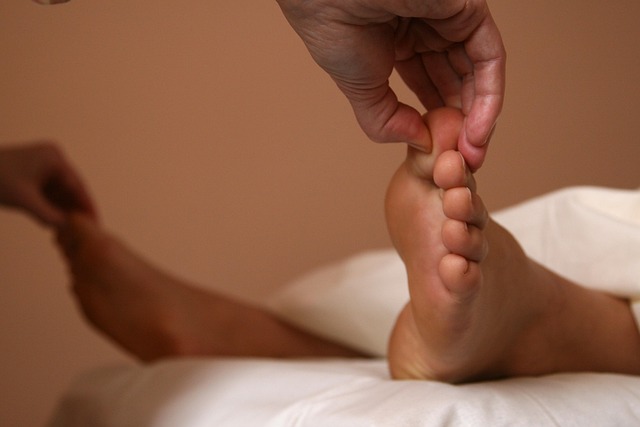Joint pain, whether from arthritis or injury, significantly impacts daily life and mental well-being. Various therapies offer solutions, ranging from traditional physical therapy and chiropractic care to innovative regenerative medicines like stem cell and PRP (Platelet-Rich Plasma) treatments. These options provide both immediate relief through anti-inflammatory measures and long-term management by stimulating the body's healing capabilities. Advanced therapies and chiropractic care together transform joint pain management, promising better mobility, reduced discomfort, and improved quality of life for conditions such as arthritis and tendinitis.
“Experience renewed mobility and alleviate joint pain with innovative therapies. This comprehensive guide explores the multifaceted approach to managing chronic joint discomfort, from traditional techniques like therapeutic massage and physical therapy to cutting-edge treatments such as stem cell and PRP (Platelet-Rich Plasma) therapy. Discover how these advanced methods, including regenerative medicine and chiropractic care, offer effective relief for arthritis and other joint conditions, enhancing your overall well-being.”
- Understanding Joint Pain and Its Impact
- Exploring Therapeutic Massage as a Relief Measure
- Advanced Treatments: Stem Cell, PRP, and Regenerative Medicine
- Traditional Approaches: Physical Therapy and Chiropractic Care
Understanding Joint Pain and Its Impact

Joint pain is a common issue that can significantly impact an individual’s daily life and overall well-being. It may arise from various conditions, such as arthritis, injury, or strain, causing discomfort, stiffness, and reduced mobility. This pain not only affects physical activities but also has psychological implications, leading to stress, anxiety, and a potential decline in quality of life.
Various therapies offer promising solutions for joint pain relief. From traditional physical therapy and chiropractic care to innovative regenerative medicine techniques like stem cell and PRP (Platelet-Rich Plasma) therapy, these treatments aim to reduce inflammation, promote healing, and restore joint function. Each approach has its unique benefits; for instance, anti-inflammatory treatments provide quick relief, while regenerative medicines offer long-term solutions by stimulating the body’s natural healing processes.
Exploring Therapeutic Massage as a Relief Measure

Therapeutic massage has emerged as a popular and effective approach to providing joint pain relief. This ancient practice leverages the power of touch to alleviate discomfort, improve mobility, and reduce inflammation in affected joints. By increasing blood circulation and releasing tension in muscles surrounding the joints, massage therapies offer a holistic solution for managing chronic conditions like arthritis, tendinitis, and other forms of joint inflammation.
Among various techniques, stem cell therapy for joint pain, platelet-rich plasma (PRP) therapy for joints, and regenerative medicine for arthritis stand out as innovative treatments. These advanced therapies promote the body’s natural healing processes by utilizing its own cells and growth factors to repair damaged joint tissue. Physical therapy for joint pain also plays a crucial role in strengthening surrounding muscles and improving overall joint stability, making these treatments a comprehensive solution for those seeking long-lasting joint relief.
Advanced Treatments: Stem Cell, PRP, and Regenerative Medicine

Advanced Treatments like Stem Cell Therapy, Platelet-Rich Plasma (PRP), and Regenerative Medicine are revolutionizing the landscape of joint pain relief. These innovative therapies offer a promising alternative to traditional treatments for arthritis and other chronic joint conditions. By harnessing the body’s natural healing mechanisms, they promote tissue repair and reduce inflammation.
Stem cell therapy for joint pain focuses on injecting concentrated stem cells into affected areas to stimulate cartilage regeneration. PRP therapy for joints involves using a patient’s own blood to create a rich concentration of platelets, which are known for their anti-inflammatory properties and ability to enhance healing. Regenerative medicine, on the other hand, utilizes specialized cells and growth factors to repair and regenerate damaged joint tissues, providing lasting relief from physical therapy for joint pain. Chiropractic care for joint relief also complements these advanced therapies by addressing spinal alignment issues that can contribute to joint inflammation and discomfort.
Traditional Approaches: Physical Therapy and Chiropractic Care

Traditional Approaches to Joint Relief often involve a combination of physical therapy and chiropractic care. Physical therapy focuses on gentle movements and specialized techniques to improve joint mobility, reduce pain, and strengthen surrounding muscles. Therapists may employ various modalities, including heat or ice packs, electrical stimulation, ultrasound, and manual manipulation, tailored to the individual’s needs. These methods aim to promote natural healing and restore function without invasive procedures.
Chiropractic care also plays a significant role in managing joint pain. Chiropractors use adjustments and manipulations of the spine and joints to alleviate pressure and improve alignment. This hands-on approach can be particularly effective for conditions like arthritis, spinal stenosis, or sports injuries. Additionally, newer regenerative medicine therapies, such as stem cell treatment and Platelet-Rich Plasma (PRP) therapy, are gaining attention as potential game-changers in joint pain relief, offering a promising alternative to conventional anti-inflammatory treatments.
Therapeutic massage and advanced treatments like stem cell therapy, platelet-rich plasma (PRP) therapy, and regenerative medicine offer promising avenues for managing and alleviating joint pain. While traditional approaches such as physical therapy and chiropractic care remain essential, these modern techniques provide additional relief options with potentially longer-lasting effects. Combining these therapies can create a comprehensive strategy to enhance mobility, reduce inflammation, and improve overall quality of life for those suffering from joint conditions like arthritis.
